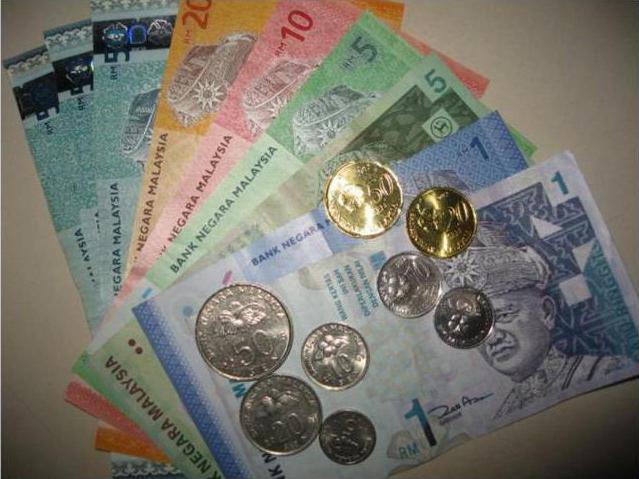Malaysia is a fairly young country, at least in the form in which it currently exists. Officially, the state was founded in 1963, and the independence of the Malay Federation was declared in 1957. Accordingly, the history of the official currency of Malaysia is relatively short, since it first appeared only in 1967.
Story
Most of the inhabitants of Malaysia call their currency dollars and cents, and even the badge uses a similar one to indicate the price, which makes very many wonder: "What is the currency in Malaysia?" Its official name sounds like "ringgit", and smaller coins are called "sen". It translates as "jagged." This name came from the Spanish silver coins common in the 16th and 17th centuries in this region, the edge of which was with teeth. It should be noted that the money of Singapore and Brunei is also called, because of which the full name, which has the currency of Malaysia, is the ringgit of Malaysia.

First edition
Back in 1967, the first official currency of this country was issued in the form in which it exists now. Then at the same time two names were simultaneously used. In English, the currency of Malaysia sounded like a dollar, and in Malaysian it sounded like a ringgit. The first issue included coins in denominations from 1 to 50 sep. The sizes of each coin varied quite significantly among themselves, which facilitated the ability to navigate the money by touch. The coin in September 1, 1967 was made of bronze, and since 1971 copper with steel coating has been used. All other coins of the first issue were made of nickel.
Visually, the obverse and reverse of all coins, both 1967 and 1971, are very similar to each other. On the obverse, the name of the country, the nominal value of the coin and the year in which it was issued, are everywhere depicted. The crescent moon (the official religion of Malaysia - Islam), a star with thirteen rays and the building of the Malaysian parliament are everywhere on the reverse. The only difference can be seen on the coin, which appeared much later, in 1971, with a value of 1 ringgit. Almost the same images were made slightly thinner, slightly changed their position, and the star acquired a 14th ray. Banknotes issued all in the same 1967 were in denominations of 1 to 100 ringgits. On the obverse of all the banknotes is the king of Malaysia, Tuanca Abdul Rahman. The reverse uses the logo of the central bank. Later, in 1983, there was an additional bill worth 1,000 ringgit. Her obverse was the same, but on the reverse, instead of the bank logo, the parliament building appeared. The most common colors of notes were blue, green and red in different shades.

Second issue
Banknotes of the second issue were produced from 1981 to 1986. They are still used, although they are very rare. It should be noted that a banknote of 20 ringgit is very rare, since few were issued. The notes themselves had the same advantage as in the first issue, however, there were significant changes. Obverse remained the same - there is a king. But the reverse is significantly different from one banknote to another. For example, 1 ringgit shows a monument from Kuala Lumpur, but for 1000 ringgit - the parliament building. Color variations have also changed. White, brown and gray colors appeared.

Third issue
In 1996, the third issue of banknotes was made. Interestingly, from 2 to 100 ringgit bills were originally issued, and only in 2000 did the face value of 1 ringgit appear.This series already looks much more modern, especially since large banknotes have a special holographic thread that significantly increases protection against counterfeiting. The obverse, again, has not practically changed, it depicts the same king, but the reverse has become even more diverse, even compared with the previous release. If earlier images of national monuments and cultural objects were mainly used, then the emphasis on new banknotes is on modern production, industry, technology and so on.

Fourth issue
The currency of Malaysia of the fourth issue is the most ambiguous of the existing ones. Firstly, only one face value of 50 ringgit was produced. Nothing is known about the rest of the banknotes. An interesting fact is that this modern banknote is non-standard and is not perceived by some ATMs, which is why unofficially the state seeks to remove it from circulation, which leads to an increase in its value among collectors. Given all the above, the question arises: "What currency should I take to Malaysia?" In fact, you can do almost anything, since on the territory of tourist centers you can change almost anything. Nevertheless, the easiest to exchange are the dollars of America and the pounds of England.

Current rate
In connection with the next round of the financial crisis in a country such as Malaysia, the currency against the US dollar at the time of writing of this article was calculated in such a way that 4.18 ringgit could be purchased for $ 1. It is constantly getting cheaper, and in the near future all these indicators can change significantly. Of course, for the convenience of calculations, you can try to get ringgits for rubles even in Russia or another country, but this is quite difficult, since it is very difficult to find them. And in terms of savings, it is unlikely that there will be a gain, since by the time of arrival in the Federation of Malaysia, the currency against the ruble could change significantly. At the moment, 0.07 ringgit can be purchased for 1 ruble.
